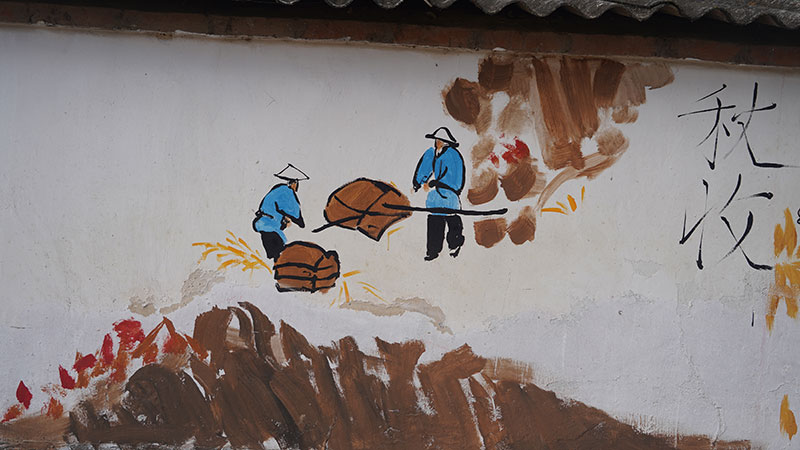Guest Opinion: China's green development a global path to sustainability
For years, China has embraced a developmental approach focused on green development, particularly since the launch of the Belt and Road Initiative International Green Development Coalition (BRIGC) during the Second Belt and Road Forum for International Cooperation in April 2019.
This initiative underscores China's commitment to the new concept of green development, advocating for sustainable low-carbon lifestyles and recycling practices. It aims to foster collaboration in environmental protection, ecological civilization, and the realization of the 2030 Sustainable Development Goals (SDGs).
The BRIGC has emerged as a response to the adverse effects of climate change. It adopts a green development model aimed at maximizing economic and social benefits while minimizing the burdens and negative impacts associated with increased energy consumption. This involves either expanding the use of renewable energy or reducing dependence on carbon-intensive energy sources.
At the beginning of its reform and opening-up, China relied heavily on fossil fuels to drive development and industrialization. Later, as a major global economy, China reevaluated its developmental model, embracing a low-carbon green development path that aligns with the global development agenda outlined in the United Nations' 2030 SDGs.
In addition to domestic policies, China has also been actively promoting international collaboration in green development, for instance, launching the BRIGC -- an open, inclusive, and voluntary international network pooling environmental expertise from all participating partners.
The coalition, with over 170 partners from more than 40 countries, seeks to integrate sustainable development, particularly environmental sustainability, into the five key priorities of the BRI: policy communication, infrastructure connectivity, unimpeded trade, capital financing, and people-to-people bonding.
Notably, the BRIGC has attracted significant attention from the United Nations Environment Programme (UNEP), which has highlighted the initiative as a valuable opportunity for the United Nations to assist recipient countries in leveraging Belt and Road investments to achieve sustainable development goals. This collaboration promotes green development through a joint effort between the United Nations and China to support green investments globally.
During the first China-Arab States Summit in 2022, China proposed eight major cooperation initiatives with the Arab side, including proposals to establish an international joint research center to combat drought, desertification, and land degradation, as well as another center dedicated to renewable energy development.
China has also been actively working with countries in the region to facilitate their energy transitions by leveraging Chinese expertise and technology. Notable examples include the completion of the third phase of the NOOR Concentrated Solar Power projects in Morocco, which was constructed by Chinese companies and stands as one of the largest tower-based power plants in the world, with a capacity of 160 MW; the establishment of Ibri Solar Power project, the largest renewable energy project in Oman; and the construction of the world's largest energy storage project on Saudi Arabia's Red Sea coast.
Financial cooperation has also played a pivotal role, as exemplified by First Abu Dhabi Bank's issuance of the first Chinese yuan green bond from the Middle East and North Africa region, aimed at supporting eligible green projects in related countries.
In this context, the alignment between Egypt and China in the field of green development is particularly notable. Egypt launched the National Initiative for Smart Green Projects, known as the "NWFE" platform, during COP27. This presidential initiative is a practical application of equitable financing principles and serves as a model for optimizing the use of developmental resources and concessional financing to tackle challenges related to climate adaptation, resilience, and mitigation.
The platform underscores Egypt's commitment to integrating development and climate action, as reflected in its comprehensive National Strategy for Climate Change 2050. This strategy outlines five main objectives and emphasizes the alignment of climate goals with sustainable development objectives and the 2030 Agenda.
Moreover, the NWFE platform represents a significant convergence between China's vision for green development and Africa's developmental priorities, with both sides demonstrating a strong commitment to collaboration in this domain.
Official data shows that China has executed hundreds of clean energy and electricity grid projects across Africa, including notable initiatives in South Africa, Kenya, Rwanda, and beyond. These projects have significantly improved living conditions, boosted industrial development, and created new opportunities for economic diversification across the African continent.
In conclusion, China's commitment to green development, both at home and abroad, presents a transformative blueprint for achieving energy sustainability and fostering inclusive growth amid pressing climate challenges.
By championing an agenda that aligns with the developmental priorities of emerging economies, China ensures equitable access to financial resources and innovative technological solutions.
The collaborative efforts of all stakeholders hold the potential to drive the global agenda for sustainable development and climate action, laying the foundation for a cleaner, more resilient, and prosperous future.
Editor's note: Rania Aboelkheir is the secretary-general of the Global Forum for Future Studies, an Egyptian think tank.
The views expressed in this article are those of the author and do not necessarily reflect the positions of Xinhua News Agency.
Photos
Related Stories
- More joint efforts from different parties encouraged to boost industry
- BRICS nations eye ‘blue ocean’ in green cooperation as ties deepen during highly-watched summit
- Deeper ties urged to boost green technology
- Green transformation revives, improves traditional high-emission industries
- China drives green growth through tech innovation: Russian researcher
Copyright © 2024 People's Daily Online. All Rights Reserved.









